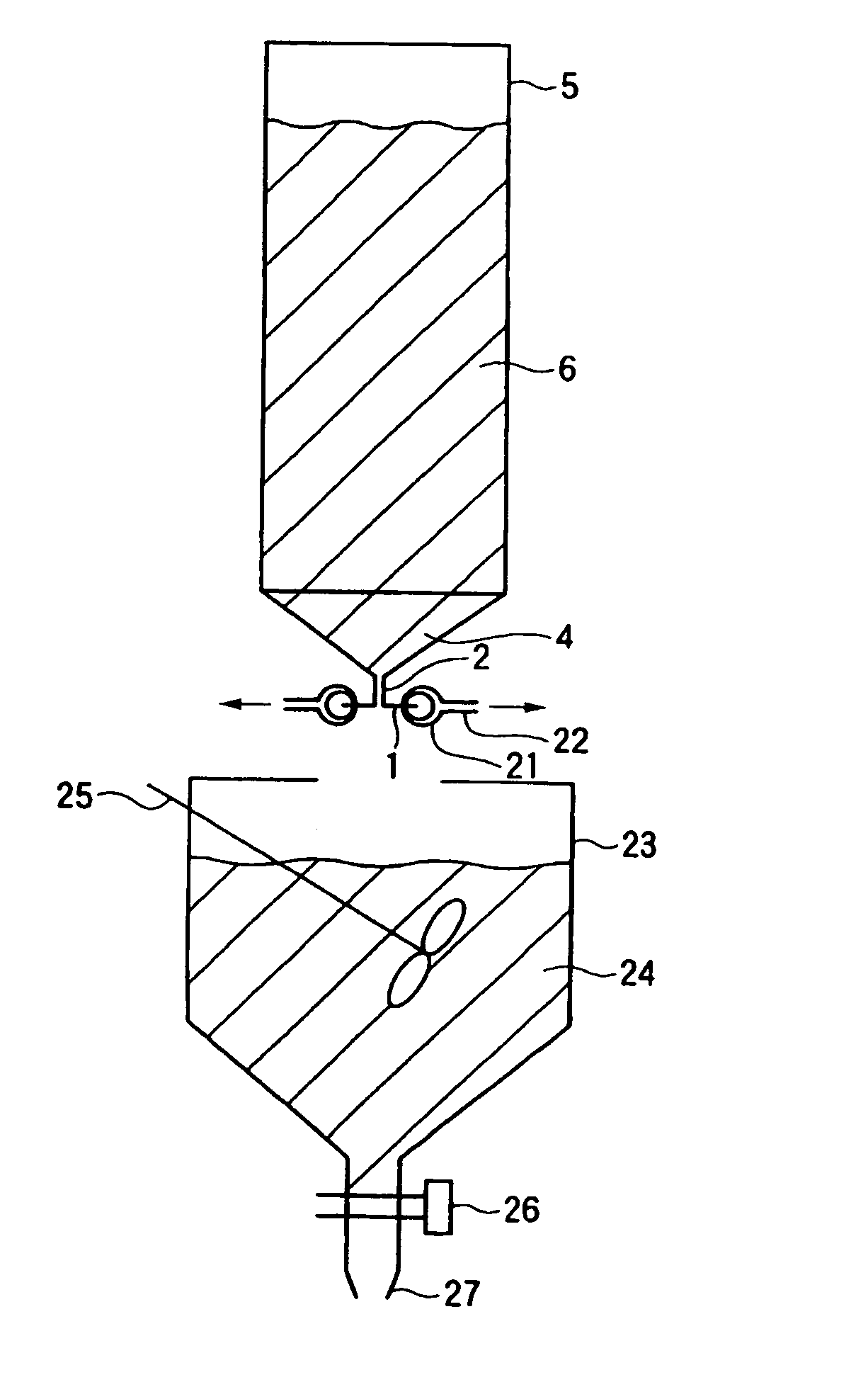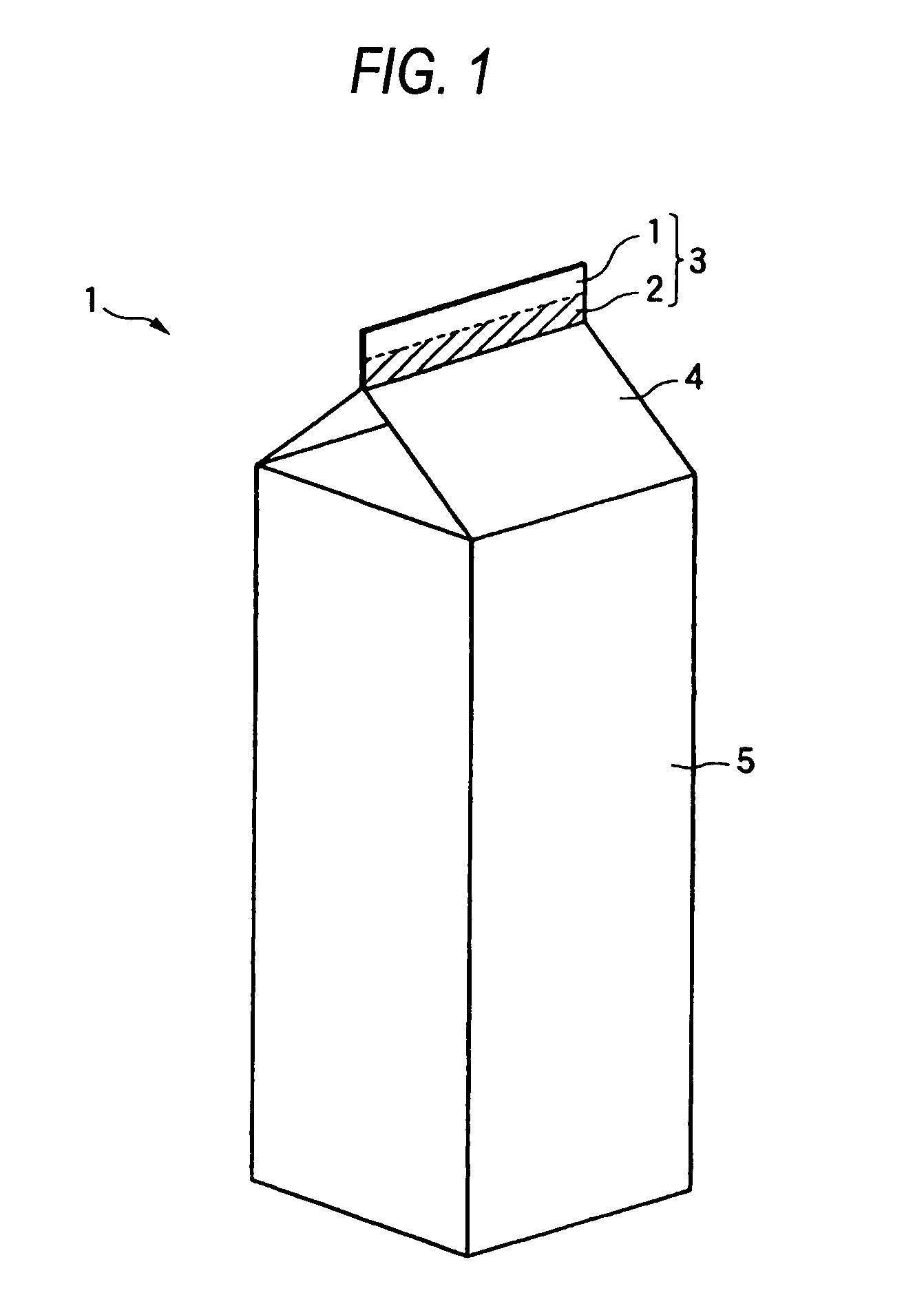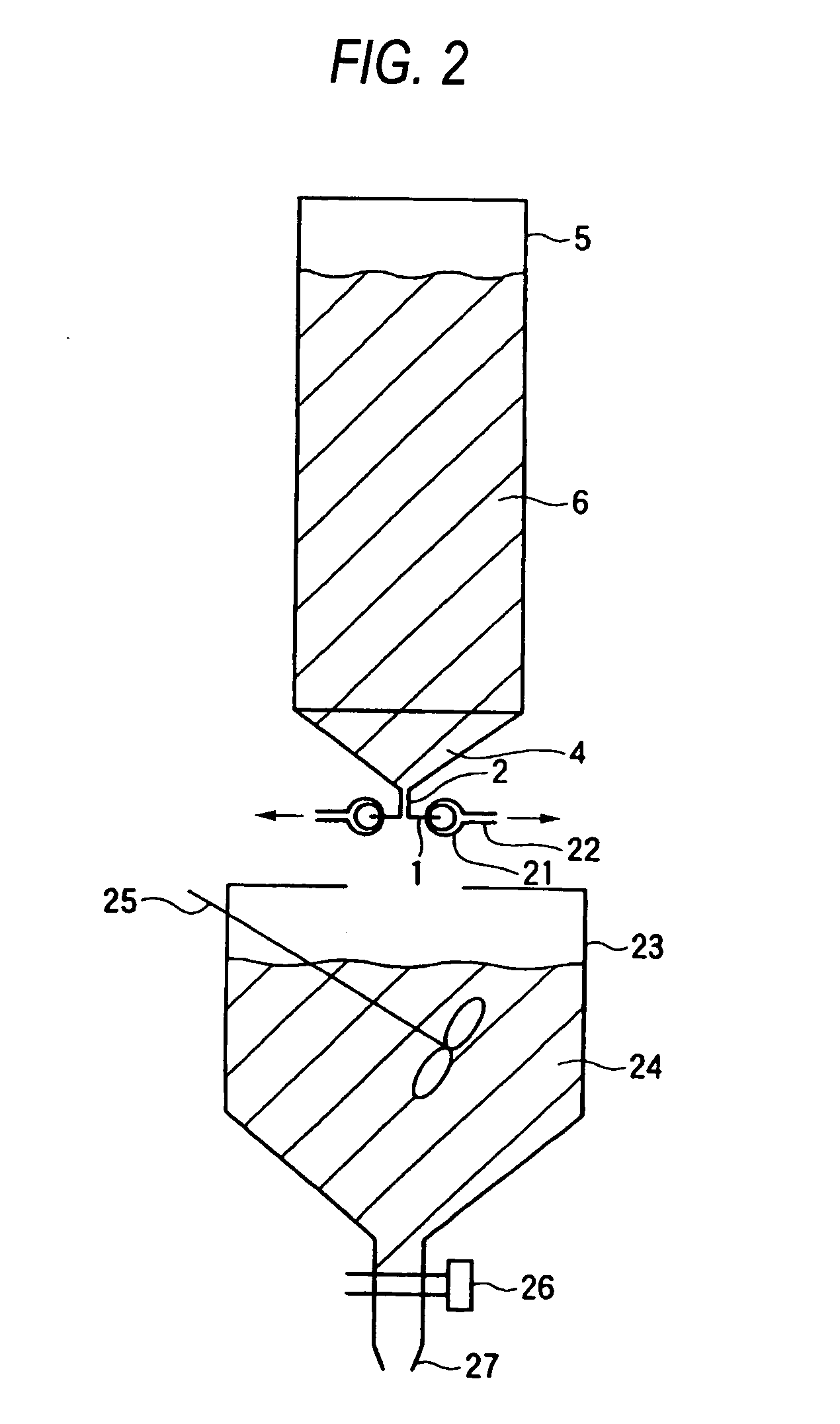Package for solid photographic-processing agent
- Summary
- Abstract
- Description
- Claims
- Application Information
AI Technical Summary
Benefits of technology
Problems solved by technology
Method used
Image
Examples
example
[0067] Specific examples of the present invention are shown below; however, the present invention is not limited thereto.
[Container]
[0068] The following four types of a solid processing agent container were used:
[0069] 1) container of polyethylene kneaded with carbon black [0070] shape: gusset type [0071] thickness: 50 μm [0072] capacity: 1 L (inner size of prismatic portion: 100×50 mm, height: 200 mm) [0073] constituent material of the container: a film was formed by means of stretching a pellet of PE in which 10 wt % of activated carbon (Ketjen Black EC, manufactured by LION CORPORATION) had been kneaded. [0074] surface resistivity of the inner surface of the container: 105 Ω (relative humidity: 40% RH, temperature: 25° C.) [0075] (Cf: surface resistivity of polyethylene without carbon black: 1016 Ω (relative humidity: 40% RH, temperature: 25° C.))
[0076]2) container of laminated film having a 2-layer structure consisting of PE / PET (the PE layer was on the inner surface side) w...
PUM
 Login to View More
Login to View More Abstract
Description
Claims
Application Information
 Login to View More
Login to View More - R&D
- Intellectual Property
- Life Sciences
- Materials
- Tech Scout
- Unparalleled Data Quality
- Higher Quality Content
- 60% Fewer Hallucinations
Browse by: Latest US Patents, China's latest patents, Technical Efficacy Thesaurus, Application Domain, Technology Topic, Popular Technical Reports.
© 2025 PatSnap. All rights reserved.Legal|Privacy policy|Modern Slavery Act Transparency Statement|Sitemap|About US| Contact US: help@patsnap.com



